9 Tips for Sleep Training Twins
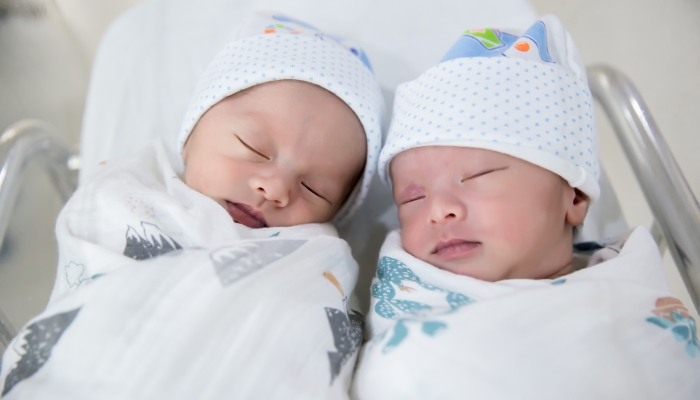
This post may contain affiliate links; please see our terms of use for details.
- Sleep training twins teaches them to fall asleep independently and get a good night’s sleep.
- Before you start sleep training, consider which method will work best for you and your family.
- Sleep training doesn’t mean your twins will cry throughout the night; there are other approaches.
- Getting twins to sleep well isn’t impossible, but it takes time and patience.
There’s no level of tiredness like that of a sleep-deprived parent, regardless of how many babies you have. The first few months are a blur as you get up throughout the middle of the night, tending to your new bundle(s).
I vividly remember one night when my oldest was an infant and my husband was out of town. I couldn’t get him to sleep and just wanted to sit down and eat dinner. I was starving. I put him in his crib, and he cried briefly while I stuffed my face.
Then, would you believe he stopped crying, laid down, and went to sleep? What just happened? That’s when it hit me—he was perfectly capable of going to sleep on his own, and I just had to figure out the best approach to sleep training. But that was with a single baby.
Sleep training twins might seem like an Olympic event, but I promise you are qualified. By following a few helpful tips, you’ll be on your way to sleep success, and your twins will finally sleep through the night.
Sleep Training Twins: What Parents Need to Know
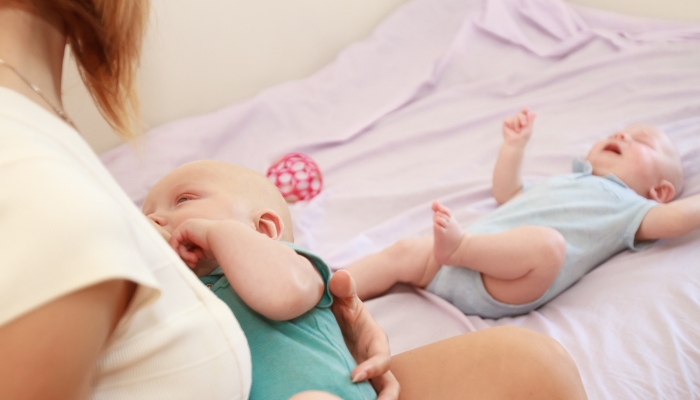
Sleep training twins can be overwhelming and challenging for any parent, especially if you’re used to single babies. The idea of trying to establish a consistent sleep routine for two little ones can seem like an impossible feat.
With the right approach and a touch of patience, though, you can successfully navigate the sleep training journey with your twins.
Although babies sleep a lot, newborn twins wake up every 2–3 hours at night to feed, so don’t try to force them to sleep through feedings, especially in the early months.
Is it harder to sleep train twins? Sure, you have two babies to work with. Anything with two children is usually harder than with one. But you’re a rockstar; those babies have nothing on you.
One of the biggest challenges many parents of twins face is getting the babies on the same sleep schedule, which takes time. You should first ensure your twins are ready for sleep training.
How to Tell if Your Twins Are Ready for Sleep Training
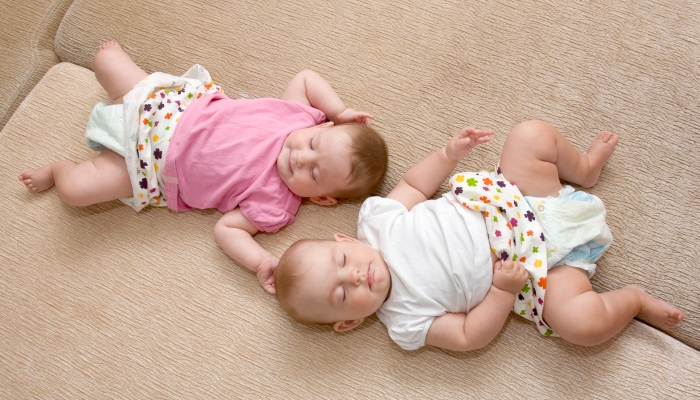
A common question parents want to know is when to start sleeping training. Every baby is different, but the University of California Davis Children’s Health Center recommends sleeping training between 4–6 months old11. How to help babies, toddlers sleep through the night. UC Davis Children’s Hospital. https://health.ucdavis.edu/children/patient-education/helping-children-sleep#:~:text=We%20recommend%20that%20sleep%20training,around%20eight%20months%20of%20age.. Keep in mind that you may still do nighttime feedings at this age.
You should also consider your baby’s adjusted age if born prematurely. For example, if your twins were born two months early, you may decide to wait until they are eight months old to begin sleep training.
Occasionally, babies born earlier than their due date don’t hit their developmental milestones at the same rate as babies born at an average gestation period.
However, babies born prematurely actually sleep more as they develop critical systems left immature. You need to wake your preemie at least every four hours to gain the necessary nutrients for growth.
Should Twins Be Separated When Sleep Training?
Deciding whether to separate twins when sleep training is entirely up to the parents. Sometimes, it’s not feasible keeping the two babies apart. For example, you may not have enough space to separate your twins while sleep training.
In addition, if you want to get your twins used to sleeping in the same room, separating them for sleep training might not work in the long run. However, if one baby is making it impossible for the other to sleep through the night, it might work to your advantage to separate them until they can fall asleep independently.
Twins share a lot, but should they sleep in the same crib? It’s a valid question that twin moms and dads want to know.
The policy statement, “Sleep-Related Infant Deaths: Updated 2022 Recommendations for Reducing Infant Deaths in the Sleep Environment22. Moon, R. Y., Carlin, R. F., & Hand, I.. Sleep-related infant deaths: Updated 2022 recommendations for reducing infant deaths in the sleep environment. Pediatrics. 2022;150(1). https://doi.org/10.1542/peds.2022-057990,” released by the American Academy of Pediatrics (AAP), states that the safety and benefits of “cobedding” for twins have not been established.
The AAP also states that any potential benefits of cobedding for twins are outweighed by the risk of cobedding.
What Sleep Training Methods Are Best for Twins?
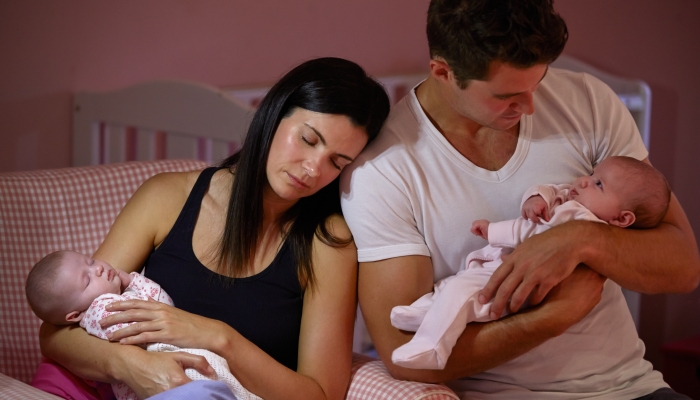
There are various sleep training methods, and you’ll need to find the one that works best for your baby. Each of my kids responded to a different sleep training method, so I went with whichever one they responded to best without too many tears from either of us.
Some sleep training methods involve a degree of controlled crying, while others don’t, so ensure you find the one you are most comfortable with.
5 Sleeping Training Methods for Twins
- The Ferber Method: teaches babies how to fall asleep independently and return to sleep when they wake at night.
- The Cry It Out (CIO) Method: allows babies to cry for a specific amount of time before falling asleep on their own.
- The Chair Method: a gentle and effective sleep training method that takes a more gradual approach than the other methods.
- The Pick Up, Put Down Method: allows parents to comfort their baby when they cry, but put them back down when they are calm.
- The Fading Method: consists of three approaches, each adjusting the baby’s bedtime schedule to find what works best.
How Long Does It Take to Sleep Train Twins?
You have to remember every baby is different, even your twins. Sleep training can take a few nights to over a week. The most important thing to remember when you sleep train twins is to stay consistent. Remember, letting your baby cry a little won’t hurt them.
It’s easy to give up after a bad night, but if you stick with a consistent routine, your babies will sleep through the night. Also, give yourself a few moments to breathe if you’re having a rough day. You’re doing a fantastic job.
The U.S. Department of Health & Human Services states that routines at home help children33. The importance of schedules and routines. ECLKC. 2022. https://eclkc.ohs.acf.hhs.gov/about-us/article/importance-schedules-routines:
- Feel in control of their environment
- Feel safe, secure, and comfortable
- Know what is happening and what comes next
- Know how to do an activity or task
- Engage in learning
9 Tips to Successfully Sleep Train Your Twins
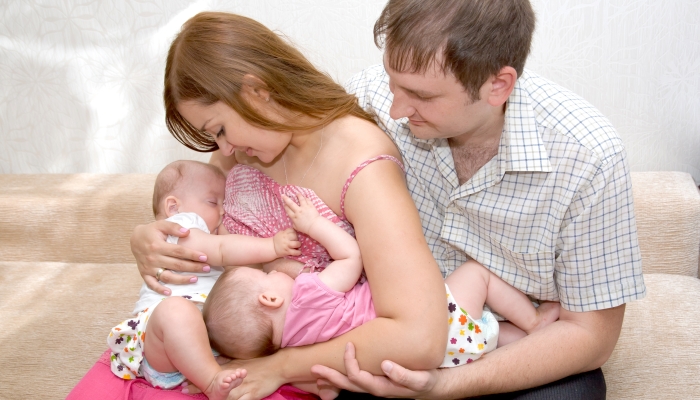
Try these tips to help make sleep training your twins go smoothly:
Establish a Consistent Routine
Consistency is critical in sleep training twins, and a solid bedtime routine leads to good sleep habits. Create a predictable bedtime routine that involves activities such as a warm bath, gentle massage, bedtime stories, and soothing lullabies.
Following the same sequence of events each night signals to your twins’ brains that it’s time to wind down and prepare for sleep. While some nights will be easier than others, having a routine is the first step in having sleep trained twins.
Watch for Sleep Cues
After getting your twins ready for bed, look for sleepy cues like yawning, pulling at the ears, and eye rubbing. It’s best to put your baby down for sleep when they are drowsy but still awake.
You want to get your babies used to falling asleep independently, not just because you rock them to sleep. If your baby is used to a night feed, consider a dream feed, which helps give everyone more sleep.
I used to dream feed during sleep training, and it helped me and my baby sleep more without sacrificing a feeding session.
Coordinate Sleep Schedules
Synchronizing your twins’ sleep schedules can be a game-changer. Try to align their feeding and nap times, ensuring both babies have a similar sleep schedule.
You can also secure a consistent daily wake time by ensuring both babies are up at the same time each morning.
This will give you a more structured approach to sleep training and give you some precious moments of rest when both babies are asleep simultaneously.
Use a White Noise Machine
Finding a good white noise machine can make all the difference when sleep training twins. You’ll likely find differing opinions on this subject because some might say using one is a crutch to get babies to fall asleep.
However, a sound machine helps block out background noise that could interfere with your baby’s sleep time.
I’m a big fan of the Jack & Rose White Noise Machine because it has sixteen soothing sounds, a soft light, and you have the option for the sounds to be continuous or on a timer. If you’re expecting twins, you want to put this on your baby registry!
- WHITE NOISE MACHINE BABY: With its fetal heartbeat sound, our baby sleep sound machine mimics the sound of a mother’s womb, which helps newborn babies fall asleep faster and stay asleep longer. At nap time or nighttime, this audio machine will help keep your baby asleep. A sleeping baby means more sleep for the whole family!
- 16 HIFI SOOTHING SOUNDS: Imagine a trip through the forest on a summer night. In addition to the chirping of insects and birds, you can hear the ocean waves in the distance, water flowing in the valley, and a sudden rain… Equipped with 6 white noises, 4 lullabies, and 6 nature sounds, the white noise machine can effectively mask disturbing or frightening sounds and protect sleep quality.
- SLEEP MACHINE: Our sleep sound machine provides you with colorful nighttime care using its unique seven-color night light. It has been proven that babies fall asleep easily with warm lights and lullabies.
- TIMER AND MEMORY FUNCTION: The sleep sound machine can play continuously or has an automatic shut-off timer for 15, 30, 60, 90, or 120 minutes. Set a timer on the sound machine to make the most effective use of it. In addition, the white noise machine remembers your previous settings for light, sound, and volume, so you don’t have to press buttons all the time!
Sleep Train at Nap Time
Some parents choose only to sleep train at night and work on naps later. However, if you can tackle both simultaneously, I highly recommend it. A solid naptime routine is like a stepping stone for getting your child to sleep longer at night.
When babies get good sleep during the day, they’re more likely to sleep better at night. Believe it or not, an overtired baby doesn’t secure a good night’s sleep.
Prepare for Sleep Regressions
Unfortunately, it’s very common for babies to go through sleep regression several times in their first year. Also, there’s a chance that one twin will go through a regression while the other doesn’t, and then they flip-flop.
There are several baby sleep regression ages, most occurring in a baby’s first year. If you can sleep train your baby before a sleep regression hits, they will likely return to healthy sleep patterns.
Time it Right
When your twins have a cold or ear infection, you want to avoid sleep training at all costs. While finding a perfect time is tough, you don’t want to sleep train during a recent disruption, like a big move, a new nanny, or an illness.
Be Patient
Sleep training twins requires a great deal of patience and consistency. It’s important to remember that every child is unique and may respond differently to various techniques.
Stay committed to the chosen method for a reasonable time before switching strategies. Consistency will help your twins establish healthy sleep habits.
Consult an Expert
If you need help with sleep training, it might be time to contact a certified sleep consultant. Your best bet for finding a stellar sleep training expert is to ask your friends; this way, you know if they’ve been successful.
FAQs
How can I keep track of each twin’s progress during sleep training?
You can keep a journal to track your twin’s progress or log the information in an app, so it’s at your fingertips. One of the highest-rated baby tracking apps is Baby+, where you can track sleep, feedings, diaper changes, weight, height, and more.
What should I do if one twin is a good sleeper, but the other isn’t during sleep training?
If one child sleeps well, but the other twin does their own thing, you should still keep your routine, even if that means waking a sleeping baby. If you’re eager to support your twins on a consistent schedule, they should have the same sleep cycle.
How can I manage my sleep during sleep training with twins?
Your baby staying asleep is one thing, but what about you? It’s said repeatedly, but you should sleep when your baby sleeps, especially early on. Trust me; the housework can wait while you get some rest.
References
- How to help babies, toddlers sleep through the night. UC Davis Children’s Hospital. (n.d.). https://health.ucdavis.edu/children/patient-education/helping-children-sleep#:~:text=We%20recommend%20that%20sleep%20training,around%20eight%20months%20of%20age.
- Moon, R. Y., Carlin, R. F., & Hand, I. (2022). Sleep-related infant deaths: Updated 2022 recommendations for reducing infant deaths in the sleep environment. Pediatrics, 150(1). https://doi.org/10.1542/peds.2022-057990
- The importance of schedules and routines. ECLKC. (2022, June 10). https://eclkc.ohs.acf.hhs.gov/about-us/article/importance-schedules-routines

Related Posts
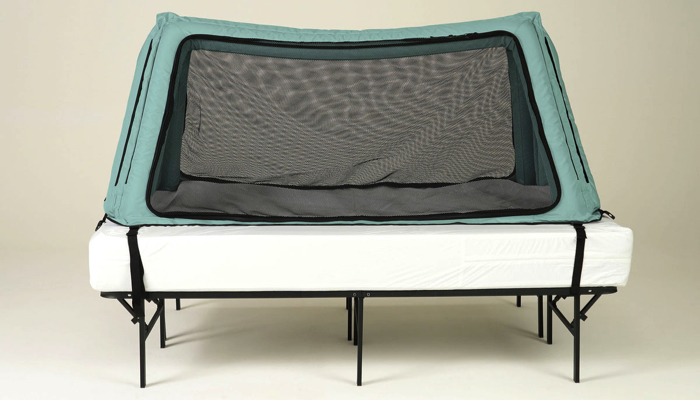
Sleep, Special Needs
Safe Place Bedding Travel Bed Review
Traveling with a special needs child can be stressful! Having a safe, durable, and easy to use travel bed can make traveling so much easier!
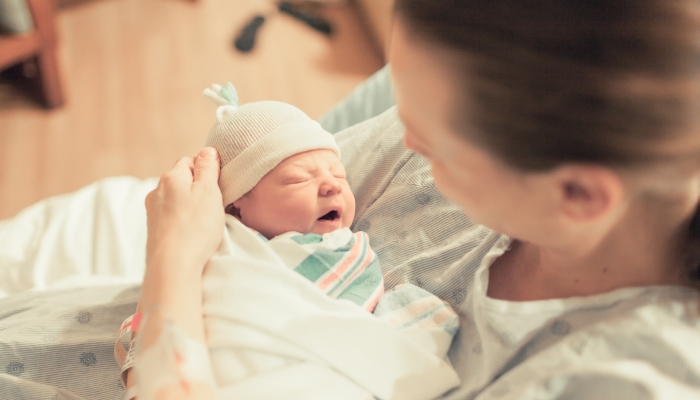
Sleep, Special Needs
Sleep Regimen for Premature Babies: Special Considerations
It can take premature babies much longer than their full-term peers to sleep for long stretches. A preemie sleep schedule may encourage better sleep.
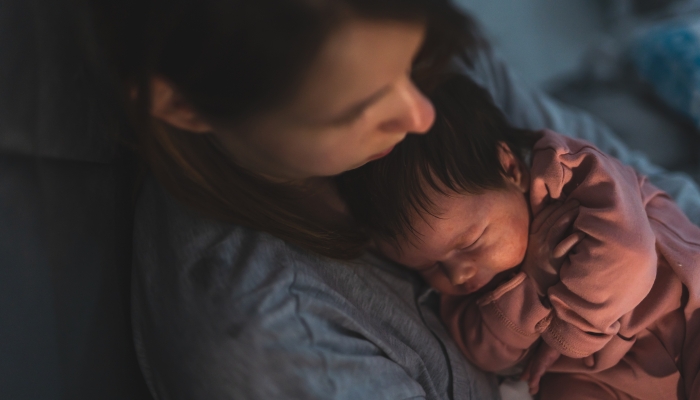
Sleep
Mastering the Bedtime Routine: 3 Tips for a Peaceful Night’s Sleep
From around six weeks, a newborn bedtime routine can help your baby learn the difference between day and night and prepare for a restful night’s sleep.
